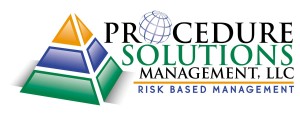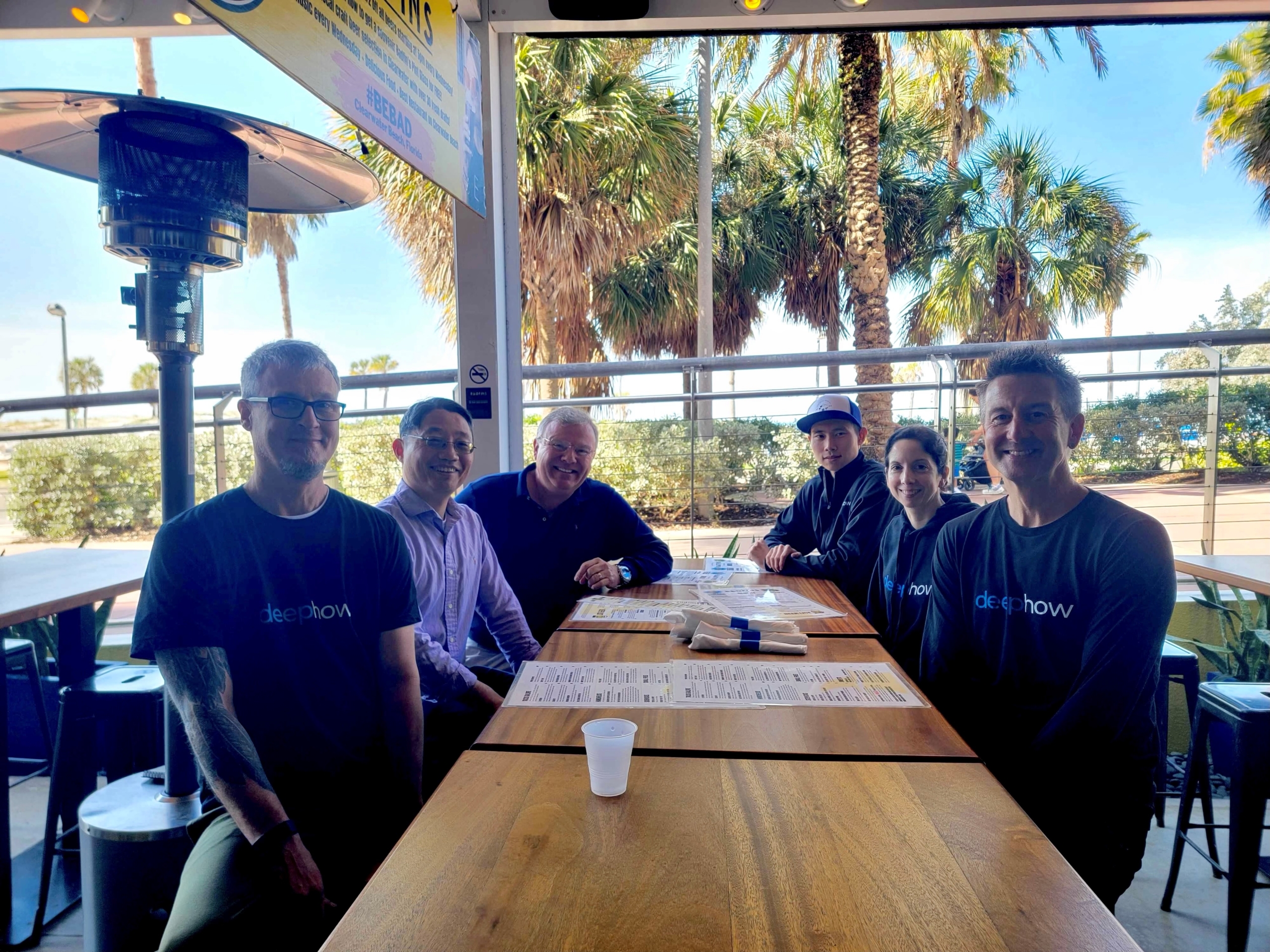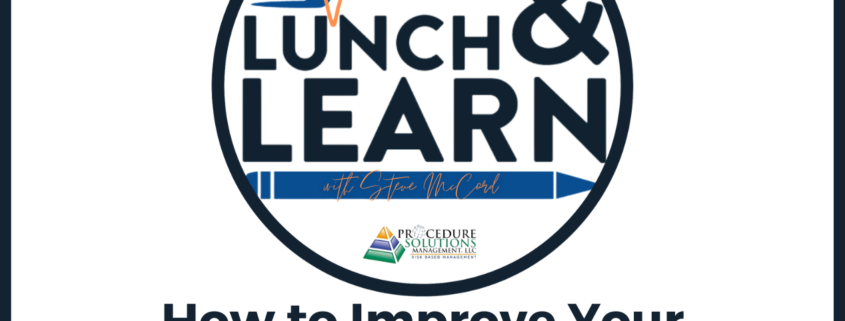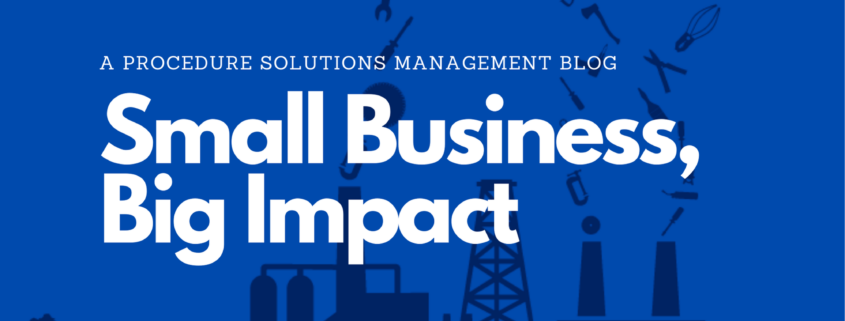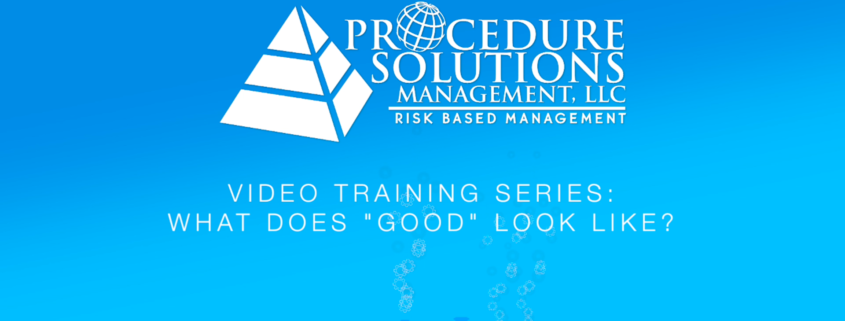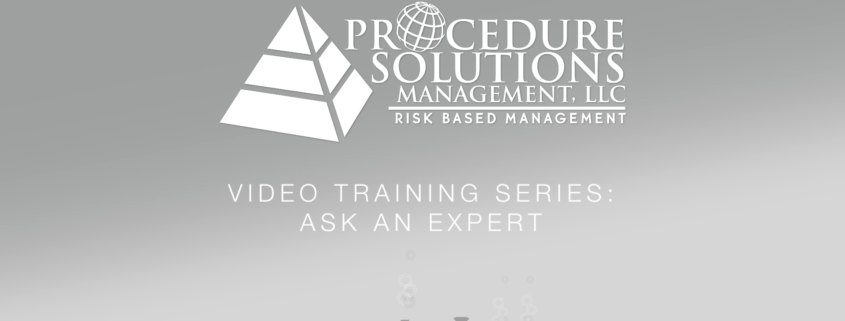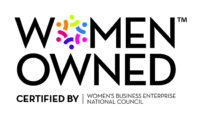Posts
Lunch & Learn – How to Improve Your Questioning Attitude
/0 Comments/in Technical Writing, Writing Tools and Tips/by Sarah PickettSmall Business, Big Impact
/0 Comments/in News, Technical Writing, Uncategorized, Writing Tools and Tips/by Sarah Pickett
The revitalization of our blog will discuss how, as a small business, we have been able to make a big impact.
Did you know that small businesses make up most of the American economy? In fact, more than 99% of U.S. businesses are small businesses!
This means that Procedure Solutions Management is part of the majority of the businesses in the U.S. While we may be considered “small,” this also means that we can make a big impact.
As a small company, we provide our training and consulting services to some of the world’s largest oil and gas companies. These services have helped ensure the safety of thousands of staff members and industry-leading businesses. Our most significant impact has been helping them have a more human-factored perspective that supports greater safety awareness in their daily operations and maintenance activities.
We have also taught over 20,000 procedure writers and reviewers how to become more human performance focused. Our training helps them correct the bad habits that they’ve fallen into while earning their PPA Procedure Writer Certification in the process.
In addition to this, we have spent the past 14 years providing staffing support to companies looking to create a much safer work environment for themselves and their colleagues.
Because we’re proud to be a small business with a big impact, we want to share some of our tips and tricks with you through the revitalization of our PSM Blog!
Each month we will have a guest writer from our team share knowledge on what they’ve learned throughout their career and at PSM. We will also spotlight our talented contract employees who will discuss life at PSM and their steps to becoming improved human performance focused writers.
We’re incredibly excited to share with you what we’ve learned in our 14-year journey!
Stay tuned for more updates, and please let us know if there are any topics you would like us to discuss!
By Sarah Pickett, Marketing Coordinator
If you like our content, subscribe to our blog using the link to the right of this post. Or, visit our services page for more information on our staffing, training, or consulting services.
What Does “Good” Look Like – Part 4
/0 Comments/in Video Training Series, What does good look like?/by James Bennett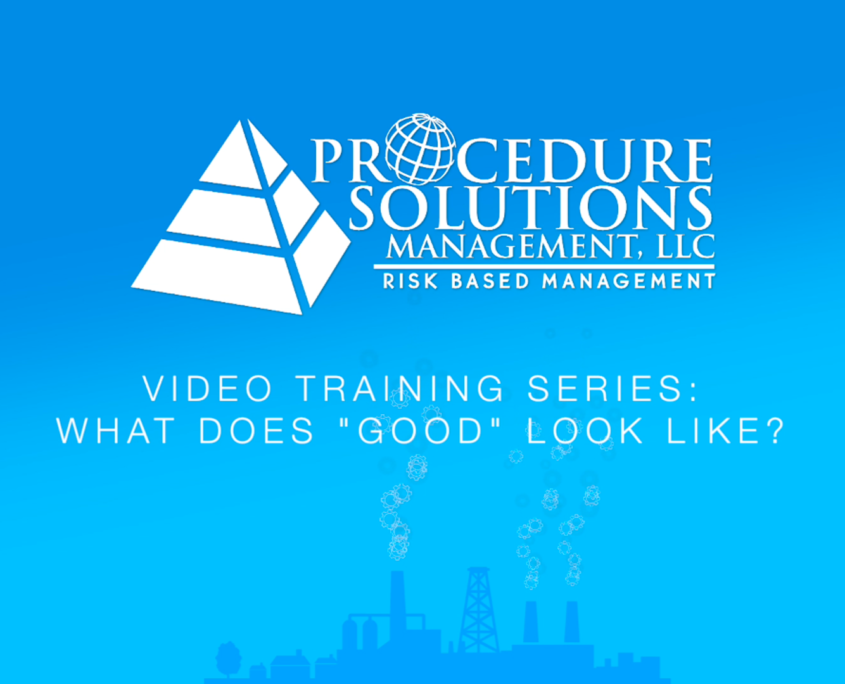
Procedure Solutions Management, LLC – Video Training Series – What Does “Good” Look Like? – Identifying Human Error Likely Situations
Identifying Human Error Likely Situations – What Does “Good” Look Like? – Episode 4
Since 2008, Procedure Solutions Management, LLC, has taught over 9,000 (correction over 10,000) students on a variety of procedure-related topics. When we teach our classes there are 5 main principles that we want to convey:
- Level of Detail – What to do OR how to do it.
- Identify Common Error Likely Situations – What does “Good” look like?
- General Technical Writing Guidelines – Writing Fundamentals
- Organizing and Sequencing of Steps
- Utilizing Templates or Human-Factored Writing Tools
This is part 4 of a 4-part “What Does “Good” Look Like” series that will focus on the second principle, Identifying (and Eliminating) Human Error Likely Situations. It will cover the following:
- Complex Calculations Without a Peer Check
- Non-Typical/Unusual Steps or Terms
- Time Constraints
We had fun putting these videos together and hope you will enjoy them. Please remember that this is only a very small part of a comprehensive training curriculum that was designed to help eliminate human performance challenges in procedures.
For more information on our Procedure Writer Certification Courses, visit our Training Page or Register NOW for one of our upcoming classes. Blog readers can use the following coupon code to save $100 on course registration: VTSBlog18
For more articles on technical writing and to be notified when part two is released, be sure to subscribe to our blog using the link to the right of this post.
What Does “Good” Look Like – Part 3
/0 Comments/in Video Training Series, What does good look like?/by James Bennett
Procedure Solutions Management, LLC – Video Training Series – What Does “Good” Look Like? – Identifying Human Error Likely Situations
Identifying Human Error Likely Situations – What Does “Good” Look Like? – Episode 3
Since 2008, Procedure Solutions Management, LLC, has taught over 9,000 (correction over 10,000) students on a variety of procedure-related topics. When we teach our classes there are 5 main principles that we want to convey:
- Level of Detail – What to do, OR how to do it.
- Identify Common Error Likely Situations – What does “Good” look like?
- General Technical Writing Guidelines – Writing Fundamentals
- Organizing and Sequencing of Steps
- Utilizing Templates or Human-Factored Writing Tools
This is part 3 of a 4-part “What Does “Good” Look Like” series that will focus on the second principle, Identifying (and Eliminating) Human Error Likely Situations. It will cover the following:
- Inconsistent Place-keeping Methods
- Precautions, Notes, Cautions, and Warnings Without Value
- Actions or Implied Actions in Precautions, Notes, Cautions, and Warnings
- Unrelated Actions in the Same Step
We had fun putting these videos together and hope you will enjoy them. Please remember that this is only a very small part of a comprehensive training curriculum that was designed to help eliminate human performance challenges in procedures.
For more information on our Procedure Writer Certification Courses, visit our Training Page or Register NOW for one of our upcoming classes. Blog readers can use the following coupon code to save $100 on course registration: VTSBlog18
For more articles on technical writing and to be notified when part two is released, be sure to subscribe to our blog using the link to the right of this post.
What Does “Good” Look Like – Part 2
/0 Comments/in Video Training Series, What does good look like?/by James Bennett
Procedure Solutions Management, LLC – Video Training Series – What Does “Good” Look Like? – Identifying Human Error Likely Situations
Identifying Human Error Likely Situations – What Does “Good” Look Like? – Episode 2
Since 2008, Procedure Solutions Management, LLC, has taught over 9,000 (correction over 10,000) students on a variety of procedure-related topics. When we teach our classes there are 5 main principles that we want to convey:
- Level of Detail – What to do, OR how to do it.
- Identify Common Error Likely Situations – What does “Good” look like?
- General Technical Writing Guidelines – Writing Fundamentals
- Organizing and Sequencing of Steps
- Utilizing Templates or Human-Factored Writing Tools
This is part 2 of a 4-part “What Does “Good” Look Like” series that will focus on the second principle, Identifying (and Eliminating) Human Error Likely Situations. It will cover the following:
- Steps With Conflicting Information
- Inappropriate Use of Verifications and Peer Checks
- Inadequate Defenses and Depth
- Excessive Branching
- Excessive Physical Challenges
We had fun putting these videos together and hope you will enjoy them. Please remember that this is only a very small part of a comprehensive training curriculum that was designed to help eliminate human performance challenges in procedures.
For more information on our Procedure Writer Certification Courses, visit our Training Page or Register NOW for one of our upcoming classes. For more articles on technical writing and to be notified when part two is released, be sure to subscribe to our blog using the link to the right of this post.
What Does “Good” Look Like – Part 1
/0 Comments/in Video Training Series, What does good look like?/by James Bennett
Procedure Solutions Management, LLC – Video Training Series – What Does “Good” Look Like? – Identifying Human Error Likely Situations
Identifying Human Error Likely Situations – What Does “Good” Look Like? – Episode 1
Since 2008, Procedure Solutions Management, LLC, has taught over 9,000 (correction over 10,000) students on a variety of procedure-related topics. When we teach our classes there are 5 main principles that we want to convey:
- Level of Detail – What to do, OR how to do it.
- Identify Common Error Likely Situations – What does “Good” look like?
- General Technical Writing Guidelines – Writing Fundamentals
- Organizing and Sequencing of Steps
- Utilizing Templates or Human-Factored Writing Tools
This is part 1 of a 4-part “What Does “Good” Look Like” series that will focus on the second principle, Identifying (and Eliminating) Human Error Likely Situations. It will cover the following:
- Identify in-field decisions without clear guidance
- Excessiveness of in-field decisions
- Steps that are vague or missing critical detail
- Excessive Administrative and Technical Detail
We had fun putting these videos together and hope you will enjoy them. Please remember that this is only a very small part of a comprehensive training curriculum that was designed to help eliminate human performance challenges in procedures.
For more information on our Procedure Writer Certification Courses, visit our Training Page or Register NOW for one of our upcoming classes. For more articles on technical writing and to be notified when part two is released, be sure to subscribe to our blog using the link to the right of this post.
Nuclear Promise – Procedure and Work Instruction’s Perfect Storm – Part 3
/0 Comments/in Technical Writing, Writing Tools and Tips/by Stephen McCord
What are the real costs associated with maintaining thousands of documents required for the execution of operating and maintaining the plant?
Recap.
In part one, we voiced concerns regarding the nuclear industry’s “Nuclear Promise” and it’s negative impacts on procedures and work instructions. These concerns were based on my experience working with nuclear sites across the country. In short, procedures and work instructions that were successfully used many times over a number of years are, in many cases, no longer meeting the needs of the “new” qualified, but less experienced nuclear workforce. The primary findings focused on the areas of insufficient level-of-detail and usability issues (human performance errors).
In part two, we discussed writing staff, which have historically consisted of individuals dedicated to supporting procedure development and work planning. These individuals are now being impacted by “Delivering the Nuclear Promise” through reorganizations, early retirements, and significant changes in the experience levels of the end user.
As a result of responses to efficiency bulletins associated with “Delivering the Nuclear Promise,” more staff are performing this work as a part-time collateral duty. In many cases, they have had very little or no training in human factored writing, and are unfamiliar with the station’s procedure and/or work package writing quality requirements. Even more frequently, we are finding staff lacking the experience needed to effectively use tools such as MS-Word.
Part 3.
In this final part, we will discuss considerations that should be evaluated in order to strengthen procedures and work instructions as a continued commitment to excellence in safety and reliability. The considerations are focused on the core goals of regaining or remaining competitive while executing this critical business function.
The most frequent response when dealing with the business function responsible for procedures is to reduce or eliminate positions and shift the procedure writing function to the line staff as a new collateral duty. This type of organizational change does see a near term or immediate budget reduction. However, it is particularly problematic because of the additional stress on existing procedures and work instructions caused by the aging workforce and the new staff taking their place This stress causes significant challenges to adequate level-of-detail and usability, or what is typically described as human performance issues. Thus, the staff working on these critical documents are ill-prepared to support the increased demands created from the newer workforce in addition to their their existing responsibilities to maintain document back logs at or below industry benchmark levels.
So where do we go from here?
To develop a strategy that will realize true cost savings without jeopardizing safety, quality or creating human performance error-likely situations, staff should first understand the real costs associated with maintaining thousands of documents required for the execution of operating and maintaining the plant.
The true cost is not identified by looking at the existing head count and associated labor hours responsible for procedure creation and maintenance and then redirecting these labor hours to other work groups. Instead, look at the cost per page for a newly created or revised procedure. In order to determine the true costs the following questions should be evaluated:
- How much time does it take per page to create or revise a procedure? (Typically the labor hours range from .5 to.75 pages per hour for new and 1.4 to 1.6 pages per hour to revise.)
- When evaluating page counts per hour, current staff should be looked at individually to determine gaps in performance. When gaps are identified, are the tools or familiarity with the tools causing performance gaps identifying the need to look at the quality of the tools and/or training to improve performance and create greater consistency. For example, some plants will use a fillable form when writing procedures, generating a significant amount of manual actions needed to create consistent documents. In contrast, other plants will utilize a macro-enabled MS-Word template that provides automated features to reduce the labor of formatting.
- Does the site have a Content and Format Procedure to provide consistent guidance when developing procedures? If yes, does this procedure align with the latest industry standard guidance found in PPA AP-907.005 Writer’s Manual? When consistent guidance is provided for the format and content development of a procedure than less creative input is used that can cause fluctuations in labor hours based on what is thought as best intentions.
- When enhancements to procedures or work instructions are requested, is a cost versus benefit performed? Is the actual cost and benefit truly understood or is every change request accepted independent of the cost?
- If staff manual actions to create job steps in the text editor areas of Passport, Maximo, SAP etc. has historically been the norm, has any consideration been given to use a macro-enabled “automated” MS- Word template and create the instructions in MS-Word and place as an OLE document in order to minimize the labor expense?
- Has the technical review process for procedures or work instructions been evaluated for the cost of performance in addition to compliance with quality requirements and/or gaps to industry standards? Once the cost is understood, are program efficiencies available that can be implemented to lower the cost and improve quality?
These are just a few of the many questions we use to help our customers in making sound business decisions in order to raise the quality of the work performed and a focus on lowering the overall costs. Do you know how much it actually costs to create or revise a procedure or work instruction – per page?
In conclusion, the ultimate goal should be to produce the highest quality product at the lowest reasonable cost. Are you making money or spending it because “this is the way we have always done it?” Are you focused on lowering the costs over the long term or just looking for a quick cost reduction now?
Procedure Solutions Management has the unique ability to help you see what you can’t see for yourself when evaluating measures that can be taken to drastically lower the costs for maintenance and upkeep of procedures and work instructions.
If you like our content, subscribe to our blog using the link to the right of this post. Or, visit our services page for more information on our staffing, training, or consulting services.
Ask an Expert – Procedure Writer’s Challenges
/1 Comment/in Ask An Expert/by James Bennett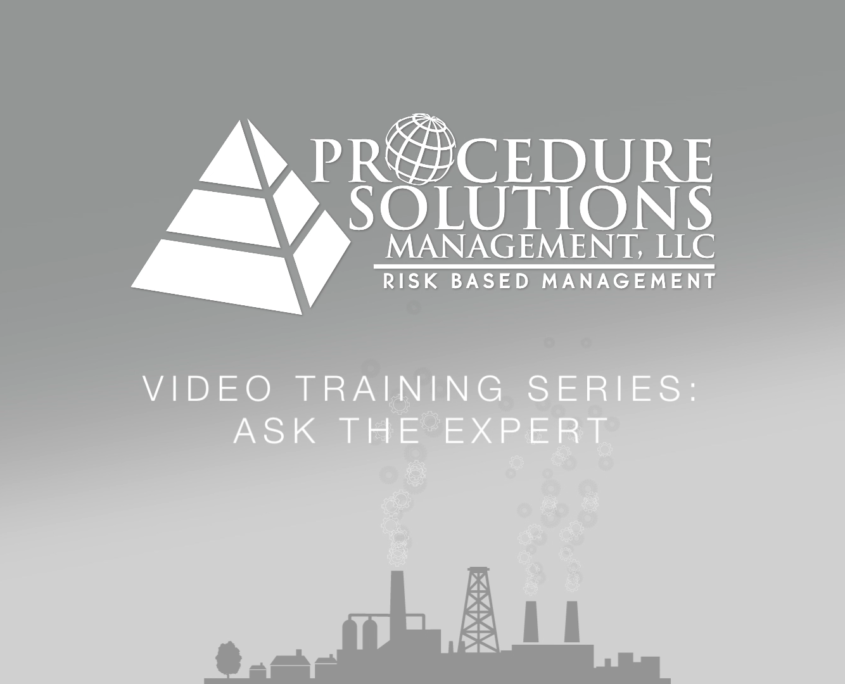
Procedure Solutions Management, LLC – Video Training Series – Ask An Expert – Procedure Writer’s Challenges
Ask An Expert – Episode 3 – “What are some common challenges faced by procedure writers?”
Procedure writers/technical writers have complex jobs. Amongst other things, they are responsible for understanding and writing for the appropriate level of detail, avoiding the creation of human performance error-likely situations , formatting complicated documents, ensuring consistency, fostering collaboration, and sometimes even project managing. These responsibilities present procedure writers plenty of opportunities for problem solving…
In this segment of “Ask An Expert,” Procedure Solutions Management’s Managing Member, Darlene McCord, answers the question, “What are some common challenges faced by procedure writers?”
For more information on Technical Writing, subscribe to our blog using the link to the right of this post. Or, visit our services page for more information on our staffing, training, or consulting services.
Follow us on Facebook
Recent Posts
 Lunch & Learn: How Graphics Enhance ProceduresMay 25, 2023 - 12:53 pm
Lunch & Learn: How Graphics Enhance ProceduresMay 25, 2023 - 12:53 pm Lunch & Learn: How Leadership Influences ProceduresJuly 2, 2024 - 6:39 pm
Lunch & Learn: How Leadership Influences ProceduresJuly 2, 2024 - 6:39 pm Tips for Effective Communication in a Remote Work EnvironmentApril 5, 2024 - 7:12 pm
Tips for Effective Communication in a Remote Work EnvironmentApril 5, 2024 - 7:12 pm A Comprehensive Guide to the Procedure Review ProcessFebruary 22, 2024 - 3:43 pm
A Comprehensive Guide to the Procedure Review ProcessFebruary 22, 2024 - 3:43 pm Lunch & Learn: Mitigating Errors During the Procedure Review ProcessNovember 6, 2023 - 4:16 pm
Lunch & Learn: Mitigating Errors During the Procedure Review ProcessNovember 6, 2023 - 4:16 pm
